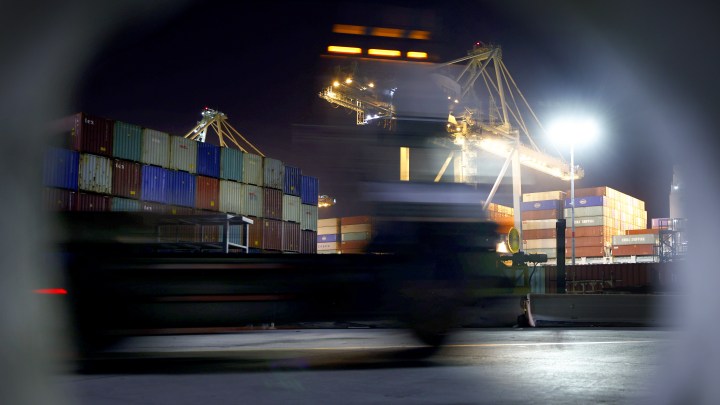
What’s behind the jump in U.S. exports?
Share Now on:
What’s behind the jump in U.S. exports?

Trade numbers are like a box of chocolates: Some of them are terrible, some of them are great, and they’re just all over the place.
Take October’s jump in U.S. exports, for example. They were $16.8 billion higher than in September, a rise of about 8%. And that brought the U.S. trade deficit down by 17.6%.
“It’s significant, but I don’t think people should get too excited about it because there’s enormous amounts of monthly variation in these numbers,” said Mary Lovely, a senior fellow at the Peterson Institute for International Economics.
In this case, Hurricane Ida held back oil and gas exports in September, so there was a big backlog that rushed out in October. That said, some of the rise in exports signals that the rest of the world is catching up to the United States in the economic recovery and buying more of our stuff.
“U.S. factories are open, and they’re available to meet the demand that’s coming from abroad, where other countries are also beginning to recover,” Lovely said.
Car exports, in particular, did well, said Paul Ashworth, the chief U.S. economist with Capital Economics.
“And then we know from the manufacturers themselves that they did more to reopen plants in November as well, so we know we probably worked through the worst of the disruption caused by the shortage of semiconductors,” he said.
But imports didn’t move much in October — up 1%. Rising imports are usually a good sign, according to Flexport Chief Economist Phil Levy, but right now it spells trouble.
“It’s really the imports that have put the strain on the supply chain,” he said. “I think the fact that we are not seeing imports decrease means that the pressure on the supply chain remains.”
Remains, he said, and probably will remain for a while longer.
There’s a lot happening in the world. Through it all, Marketplace is here for you.
You rely on Marketplace to break down the world’s events and tell you how it affects you in a fact-based, approachable way. We rely on your financial support to keep making that possible.
Your donation today powers the independent journalism that you rely on. For just $5/month, you can help sustain Marketplace so we can keep reporting on the things that matter to you.











